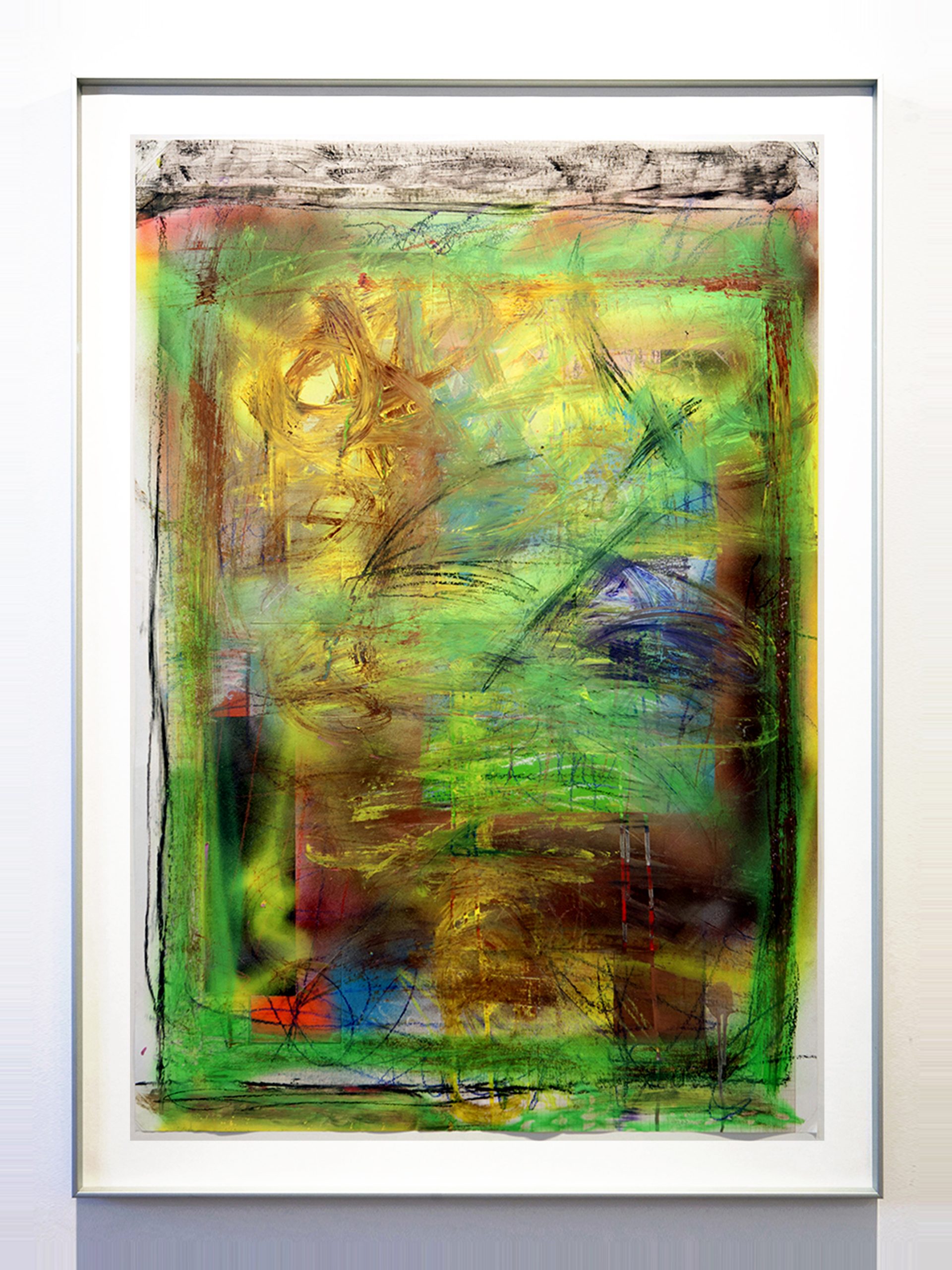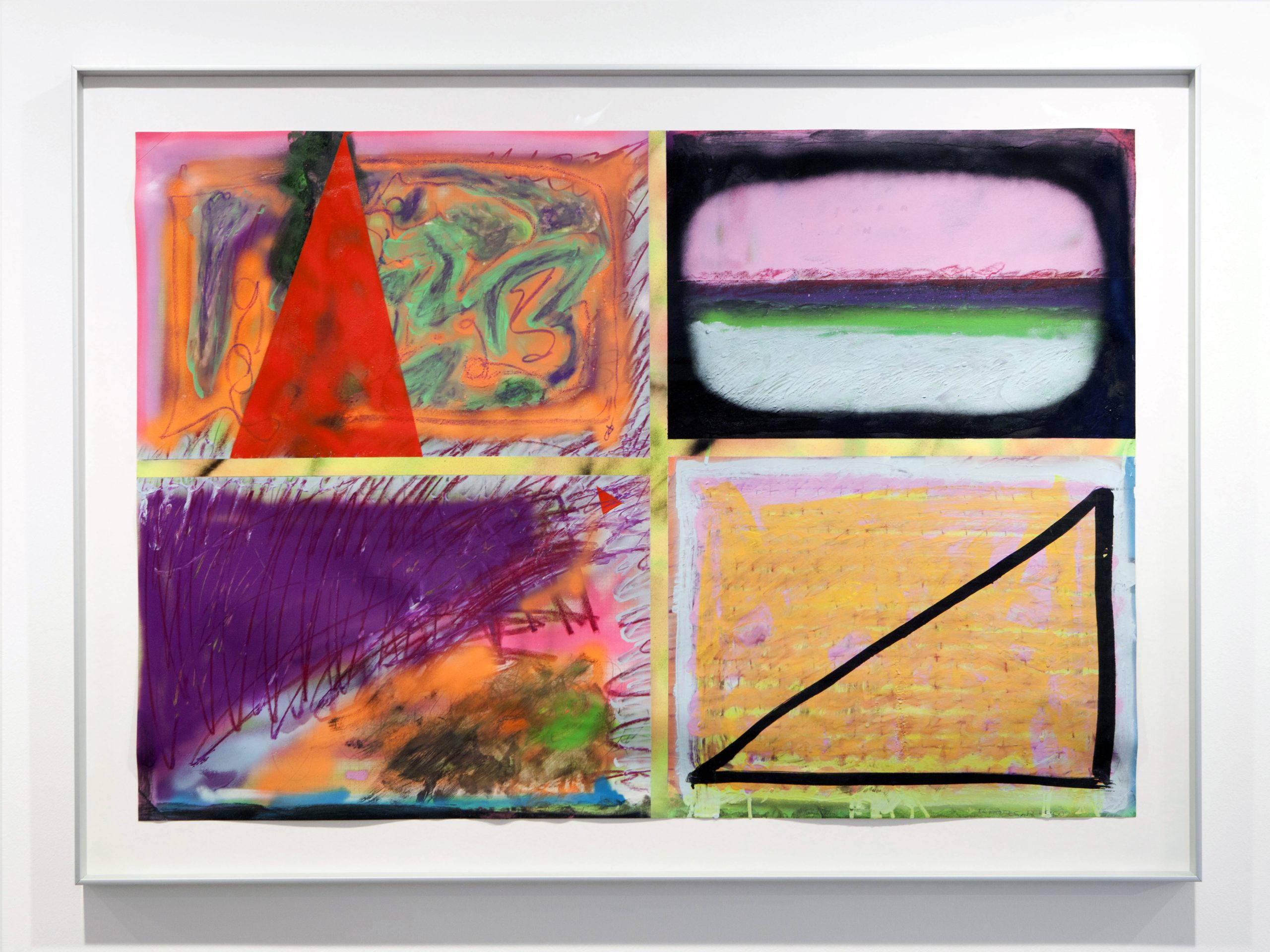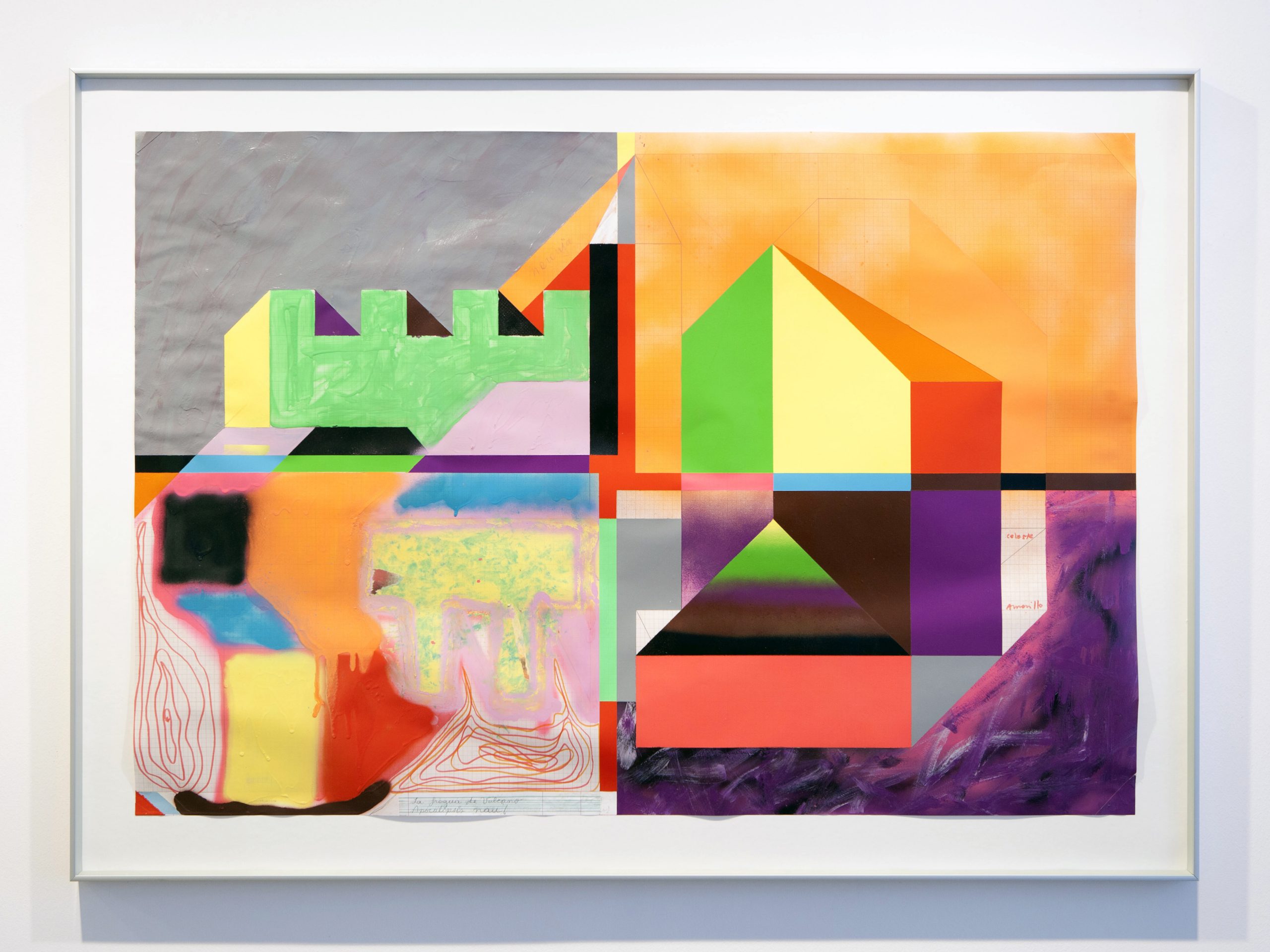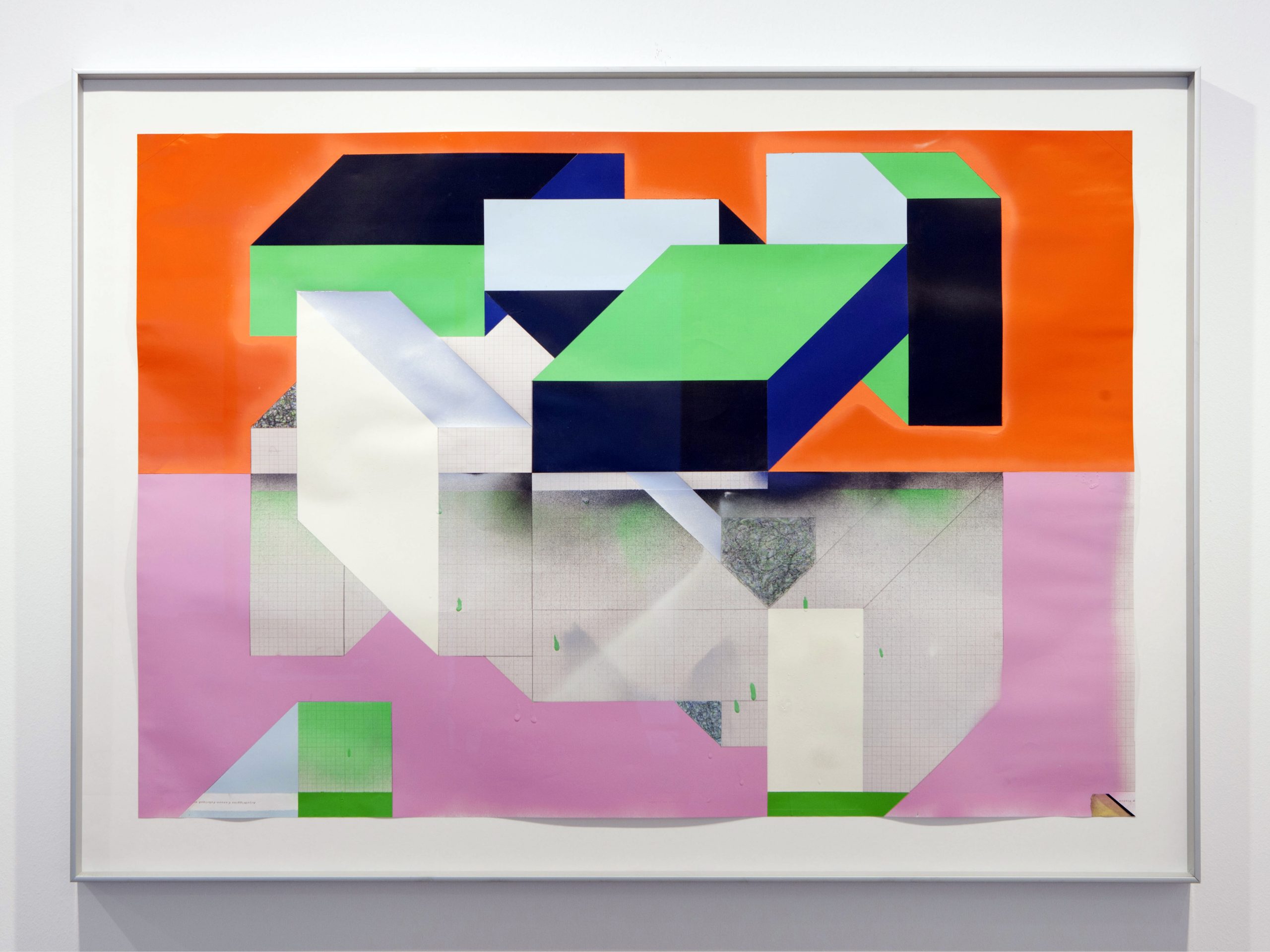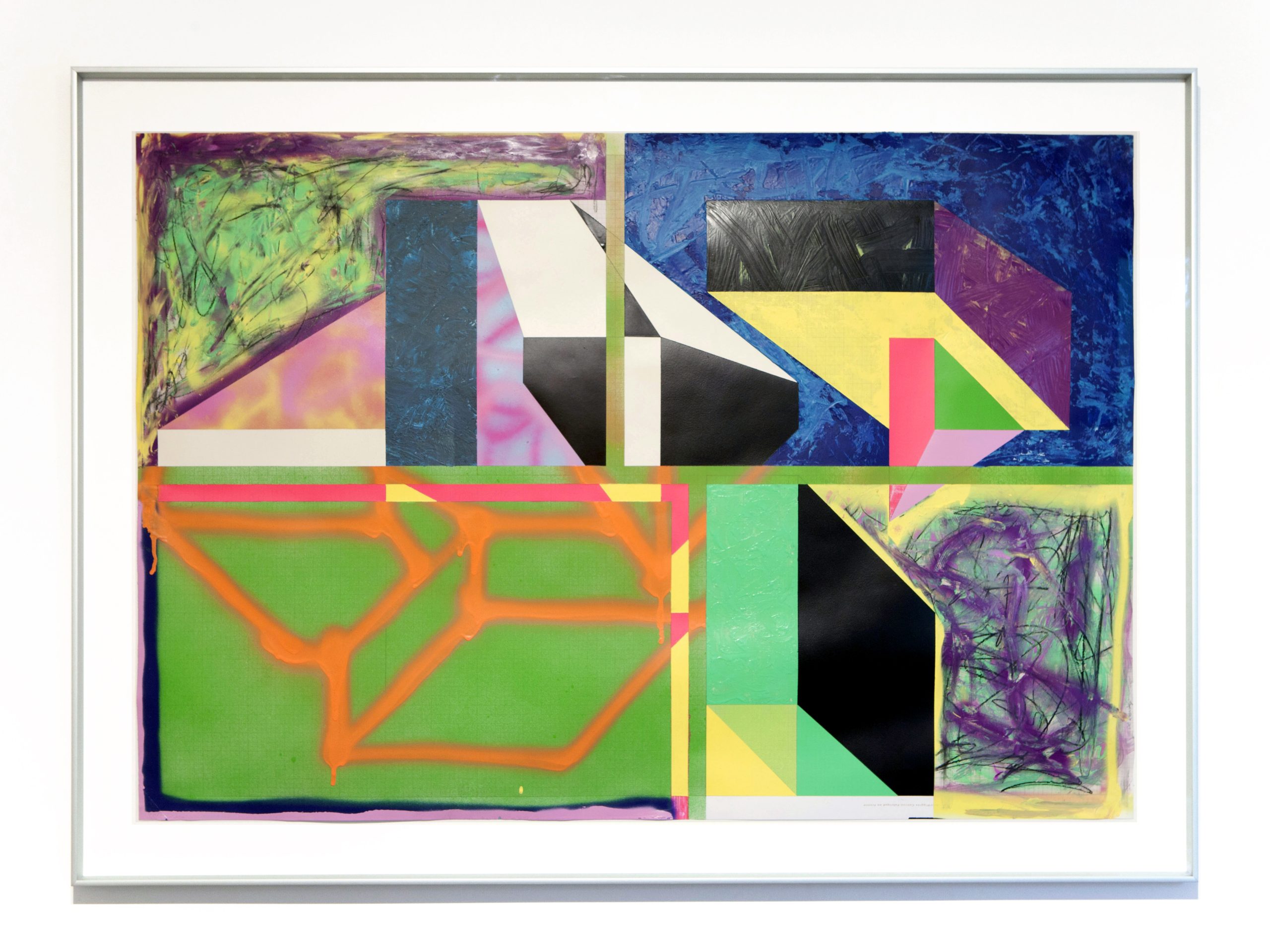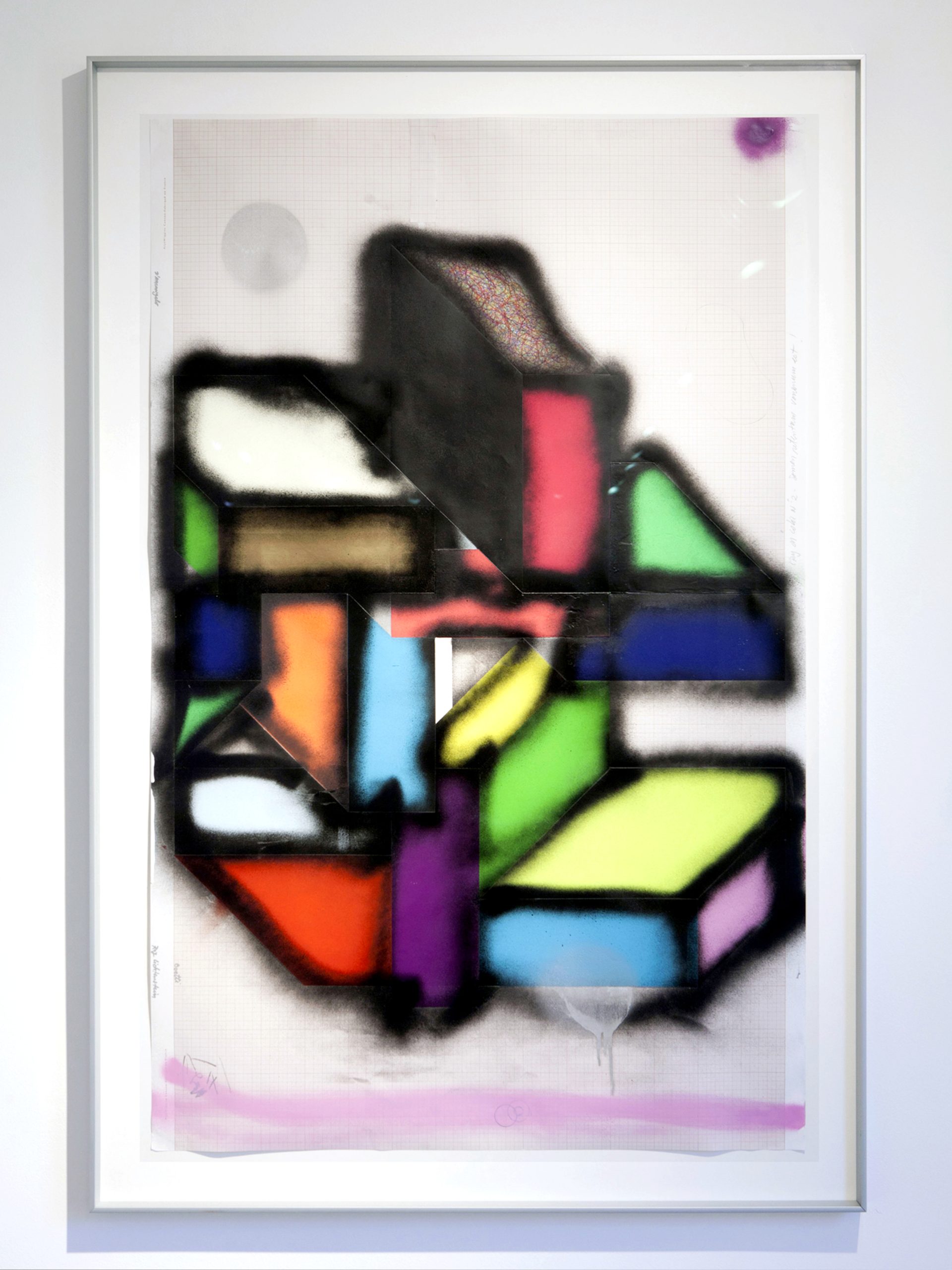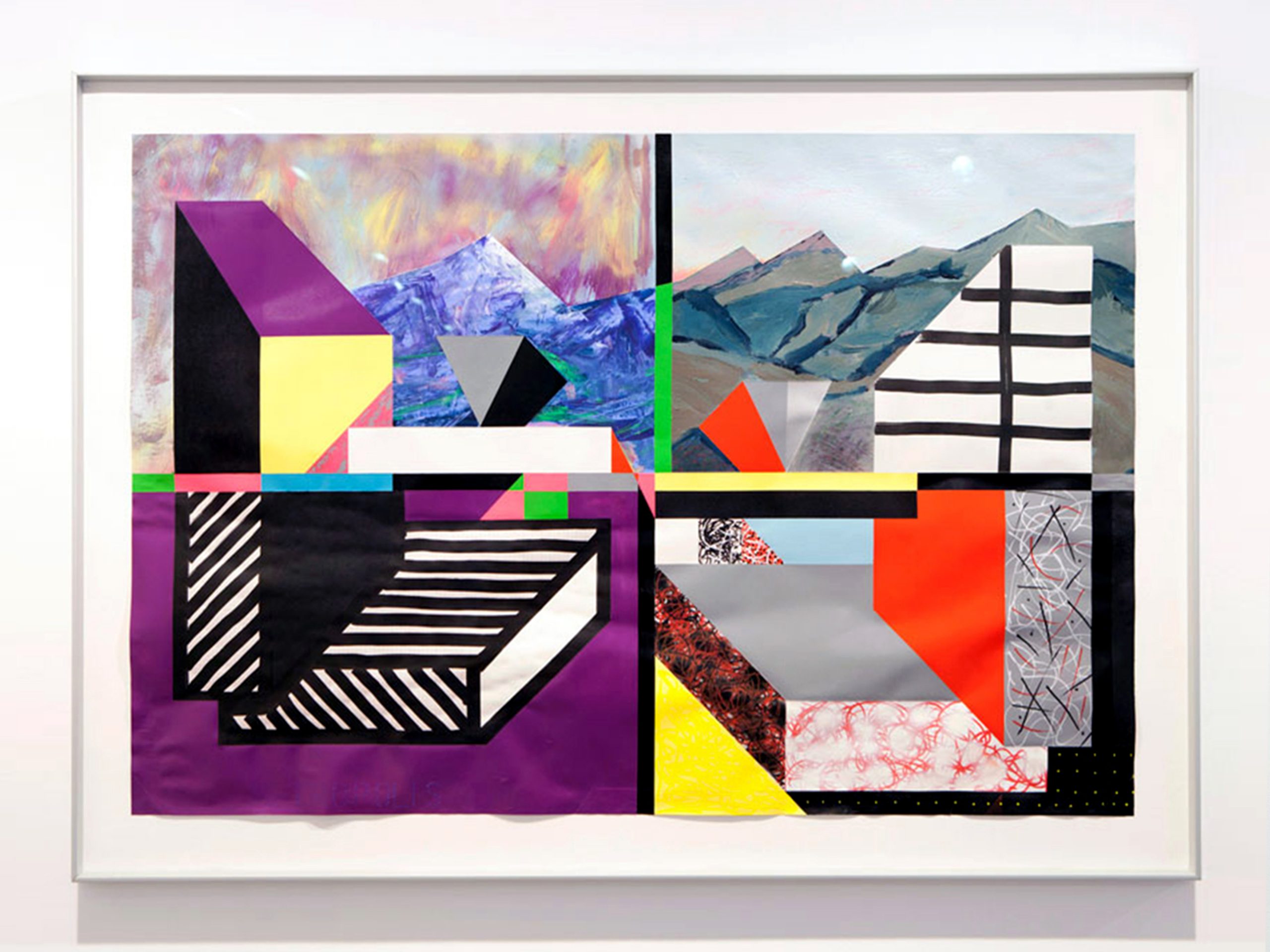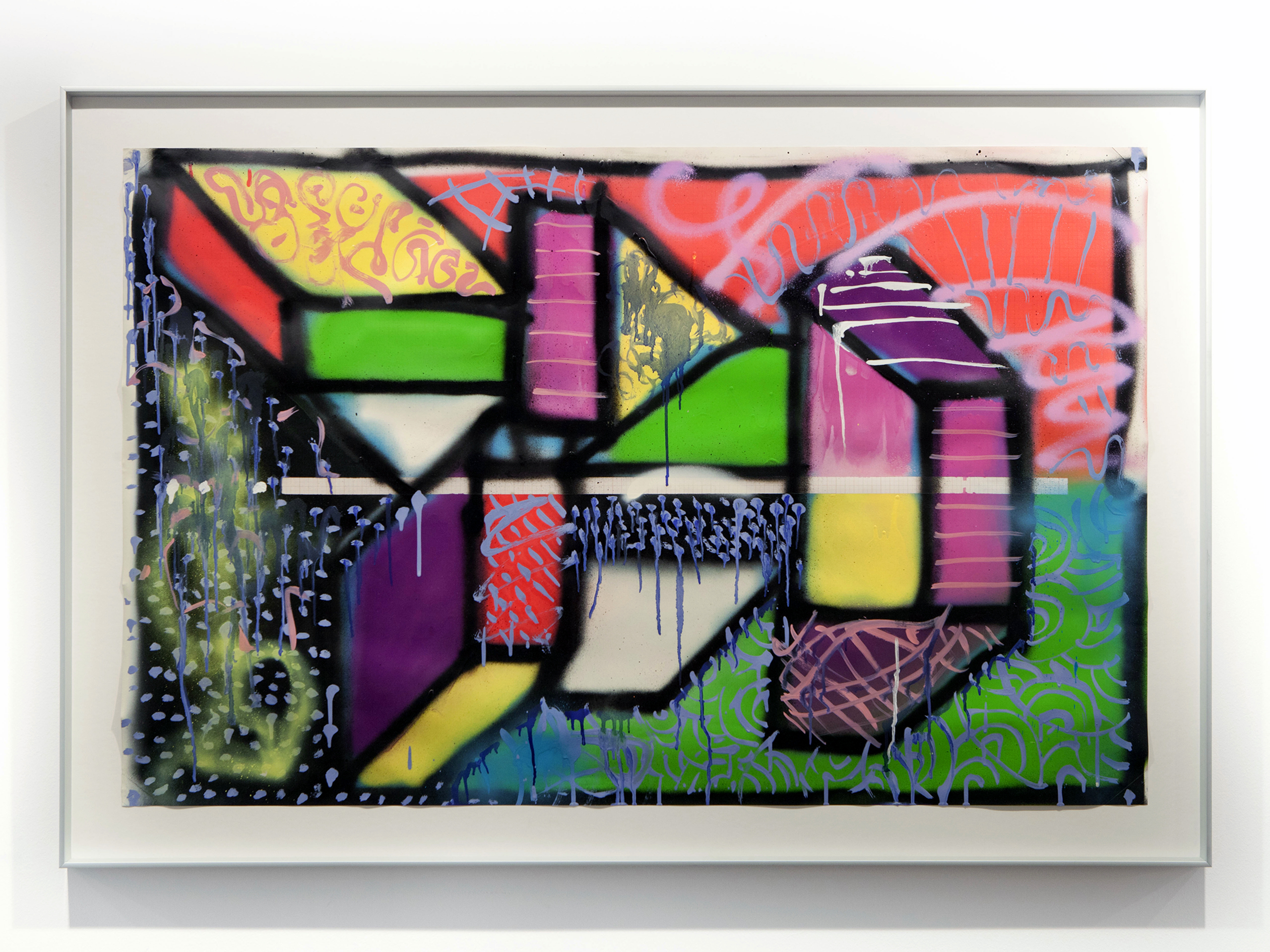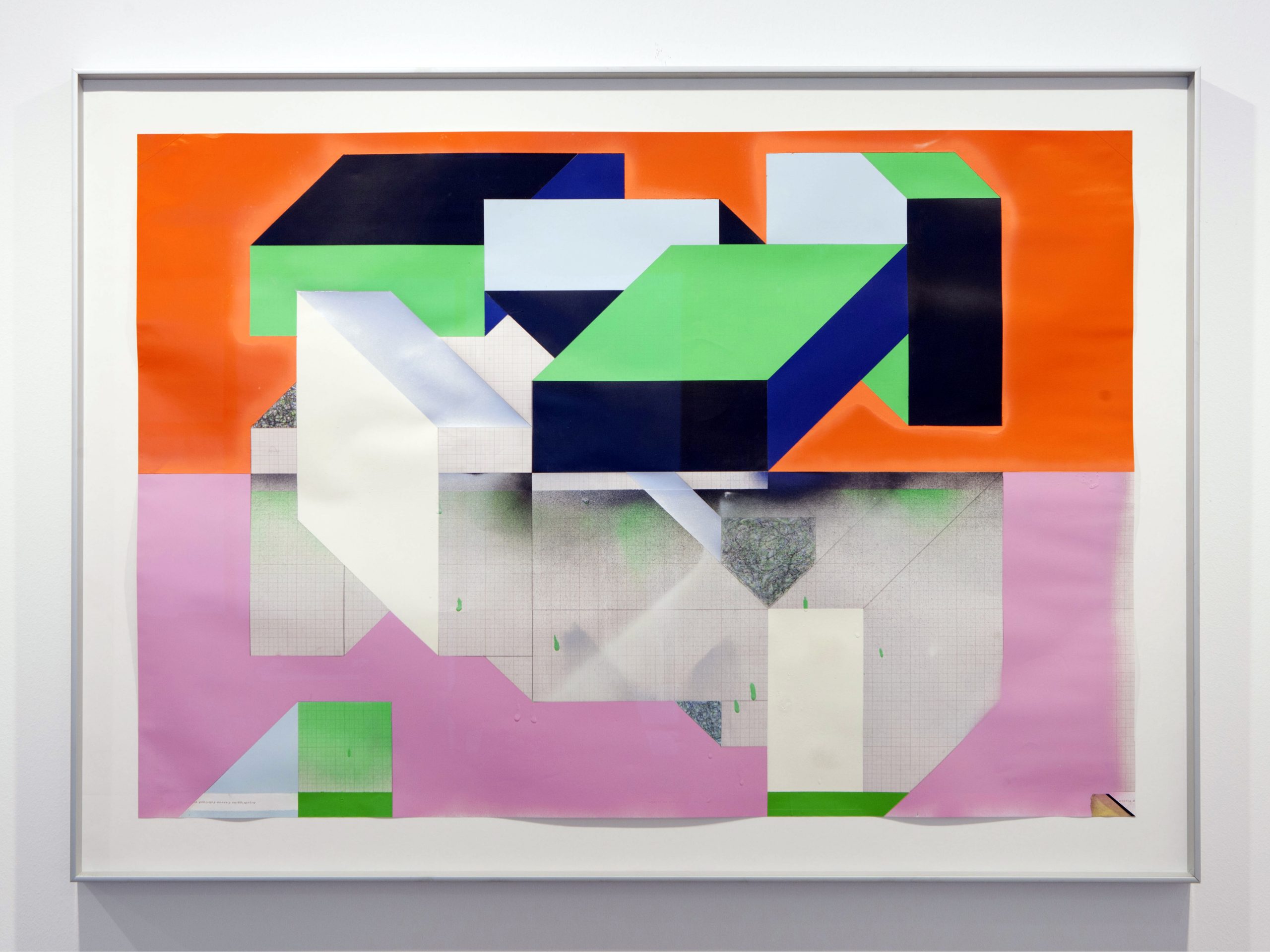La Tragedia del Color
Esta serie de pinturas la realicé sobre papel milimetrado. Primero utilicé lápiz de grafito para dibujar o proyectar las imágenes y luego trabajé con spray acrílico, pintura en esmalte, pintura acrílica, óleo, tinta, bolígrafos de tinta acrílica y crayones para descubrirlas. También incluí la utilización de muchos instrumentos como brochas, reglas, escuadras, esponjas, masking tape, trapos, cucharas, espátulas, cuchillos y mis dedos, que uso mucho.
Estas pinturas fueron y son proyectos, formulaciones cromáticas proyectivas y las desarrollé en un tiempo extenso de exploración: un proceso largo a través del cual llegué a concebir imágenes que no sabía que podría haber imaginado alguna vez.
El título de la serie, La Tragedia del Color, es un tributo al poeta chileno Alfonso Echeverría, quien publicó un libro homónimo en 1970. Me interesó ese título porque resulta extraño asociar el color a la tragedia. Esa contraposición de términos “tragedia/color” me dejó muy conmovido, porque mi cabeza quedó llena de sugerencias de esa yuxtaposición, por decirlo así, resulta una imagen poética, como se suele llamar, bien paradojal y, bueno, de las paradojas, de las yuxtaposiciones emanan oposiciones de sentido o contrastes que multiplican la potencia semántica de las palabras. Y el color funciona, en la imagen pictórica, bastante en esa dirección. Es decir, el color es un asunto de contraste, el naranja se yuxtapone al verde (opuestos complementarios), por ejemplo, y a partir de esa diferencia radical es posible construir, pues a partir del contraste entre ellos es realizable componer límites desde los cuales articular y definir algo, una situación, que se ofrece a la visón.
Por otra parte, está el asunto mismo del libro. Como ya he mencionado en otra ocasión, éste surgió de una experiencia muy triste para Alfonso Echeverría cuando en su condición de intérprete simultáneo, fue enviado en 1967 a Londres y Sudáfrica por las Naciones Unidas a verificar las acusaciones hechas, por prisioneros evadidos de cárceles sudafricanas, sobre la violación de los Derechos Humanos. El texto es un testimonio escrito en prosa poética sobre el maltrato en las cárceles sudafricanas de la época. Y me asombró, justamente, que desde una experiencia horrorosa surgiese la poesía. Esto se vuelve como una especie de contraposición o contraste muy severo, porque es una poesía que trata sobre la brutalidad del abuso de ser humano contra el ser humano. Lo inquietante es que se trata de un trabajo de poesía política en el que, sin embargo, la poesía o el arte sigue siendo lo sustancial. Es decir, el arte sigue siendo el asunto en el que no puede dejar de reparar o moverse el poeta. Con esto quiero decir que, por ejemplo, desde un asunto tan angustioso y que apesadumbra profundamente, Echeverría no reprime la posibilidad de expresar ideas como la siguiente: donde el poder corrompe, la poesía limpia. Y esto lo vitaliza a uno porque lo que él cuestiona es la corrupción del poder político por contraposición a la virtud del poder del arte. Estas son cuestiones que me preocupan y que se expresan implícitamente en mi trabajo por medio del color y a través de imágenes que, según mi sensibilidad, contienen un elemento irónico.
(English)
The Tragedy of Color
I made this series of paintings on graph paper. I first used graphite pencil to draw the images and then worked with acrylic spray, enamel paint, acrylic paint, oil, ink, acrylic ink markers and crayons to discover them. I also included the use of many instruments such as brushes, rulers, squares, sponges, masking tape, rags, spoons, spatulas, knives, and my fingers, which I use a lot.
These paintings were and are projects, projective chromatic formulations, and I developed them over an extensive time of exploration: a long process through which I came to conceive images that I didn’t know I could have ever imagined.
The title of the series, The Tragedy of Color, is a tribute to the Chilean poet Alfonso Echeverría, who published a book of the same name in 1970. I was interested in that title because it is strange to associate color with tragedy. That contrast of terms “tragedy/color” left me very moved because my head was full of suggestions. From that juxtaposition, so to speak, results a poetic image, as it is usually called, quite paradoxical and, from which oppositions of meaning multiply the semantic power of the words. And color works, in the pictorial image, quite in that direction. Color is a matter of contrast, orange is juxtaposed with green (complementary opposites), for example, and from that radical difference it is possible to build and compose a situation, that is offered to vision.
On the other hand, there is the matter of the book itself. This arose from a very sad experience for Alfonso Echeverría when, in his capacity as a simultaneous interpreter, he was sent in 1967 to London and South Africa by the United Nations to verify the accusations, about the violation of Human Rights, made by prisoners who escaped from South African prisons. The text is a testimony written in poetic prose about mistreatment in South African prisons at the time. And it amazed me, precisely, that poetry emerged from a horrific experience. This becomes like a kind of very severe contrast because it is a poetry that deals with the brutality of the abuse of human beings against human beings. The disturbing thing is that it is a work of political poetry in which, however, poetry or art continues to be the substance. Art continues to be the issue in which the poet cannot stop repairing or moving. By this I mean that, for example, in such a distressing and deeply saddening matter, Echeverría does not repress the possibility of expressing ideas such as the following: where power corrupts, poetry cleanses. And this vitalizes one because the questions are about corruption of political power as opposed to the virtue of the power of art. These are problems that concern me and that are implicitly expressed in my work through color and through images that, according to my sensitivity, contain an ironic element.
